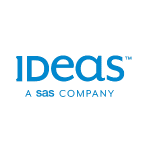I t’s incredibly difficult to think and act strategically if you don’t have an idea of what the future holds.
t’s incredibly difficult to think and act strategically if you don’t have an idea of what the future holds.
That’s a simple truth, but it’s really at the heart of why forecasting matters. When you understand what’s most likely to come next, you can plan and act accordingly—and ultimately be more successful.
If you’re new to revenue management or hotel operations, it will help to get acquainted with hotel demand forecasting, and we can help get you up to speed. In this blog we’ll explore what hotel demand forecasting is, what it’s used for, and more.
What is a hotel demand forecast? And why does it matter?
A hotel demand forecast is a projection of demand (for rooms or other outlets like meeting space) that is used by revenue leaders to guide strategies for demand generation, pricing, inventory controls, segment mix and more.
A demand forecast is an essential guiding force for hotel revenue success. With it, commercial teams (sales, marketing, distribution and revenue management) can devise tactics—whether that’s implementing length of stay requirements, limiting distribution channels or increasing advertising spending—for maximizing revenue.
What other types of forecasts do hotels use?
While demand forecasts play a critical role in revenue management efforts, they’re not the only type of forecast typically used by hotels. Let’s take a closer look at two other closely related, but distinct forecasts employed by hotels.
An operational forecast is a projection of revenue and guest turnover by department. This forecast is used by hotel operations teams to inform planning and purchasing decisions as well as staffing and other cost-related needs.
A financial forecast is a projection of total revenue and costs by department. This is used by finance, administration and ownership to anticipate profitability, manage cash flow and inform high-level planning decisions.
So what makes a demand forecast stand apart from these two? While operational and financial forecasts aim to predict the actual number of rooms sold and revenue generated for planning purposes, a demand forecast is focused on projecting what a property could sell if they had unlimited inventory—a concept known as “unconstrained demand.”
Which factors influence a hotel demand forecast?
The answer to this can vary—some forecasts are relatively rudimentary while others implement a mix of data from a wide variety of sources and have mechanisms for frequent self-refinement as relevant data fluctuates. That said, there are a few foundational factors that typically influence hotel forecasting projections.
Commonly used hotel demand forecast factors include:
- Historical booking data
- Business currently on the books
- Booking pace
- Estimated cancellation rates and group materialization
- Special events and outlier circumstances
- Price changes (for competitors and their own property)
Additionally, some forecasting models may opt to include information like reputation data, airline data and even weather patterns in their models. When properly weighted, these factors can combine to provide a solid—if imperfect—foundation for projecting future demand.
That said, there are also complicating factors that more advanced forecasting approaches can effectively take into account. One important consideration for most hotels is that demand and booking behavior is not uniform across market segments, room types and other product types, so efforts are made to forecast at a granular level and understand the interplay between fluctuations in forecast-influencing data for each.
How is uncertainty accounted for in demand forecasting?
While having the ability to “look into the crystal ball” and project demand for the next year with 100 percent accuracy would certainly simplify the work of a hotel commercial team, the reality is that no forecast—no matter how sophisticated—is without uncertainty. Unpredictable and uncontrollable events are a fact of life—the rub is in how to effectively account for this uncertainty.
There are two primary approaches to uncertainty in forecasting, deterministic forecasting and stochastic forecasting.
A deterministic forecasting model assumes that with the right inputs and variables, future events can be predicted with complete accuracy. While they are often favored for their ease of design and interpretation, these models don’t attempt to account for the uncertainty or randomness of events.
Stochastic forecasting models account for uncertainty by providing a range of possible outcomes that are weighted by their likelihood instead of providing one single outcome. As more data comes in and you get closer to the forecast date, the band of likely outcomes typically narrows as there’s less potential for uncertainty. The approach helps to calibrate responses to projected demand fluctuations—a change in projected demand that’s far into the future should not elicit the same response as one a week out.
Hotel demand forecasting is a critical factor in ensuring a property is making the most of its available inventory. While rudimentary demand forecasting efforts are a definite step up from not forecasting at all, inaccuracies stemming from flawed methodologies lead to flawed strategies and missed opportunities.
It takes an advanced revenue management system (RMS) to manage the complexities of demand forecasting effectively and ensure decisions are made on based on the best possible view of what’s likely to come. These powerful tools quickly adapt to changing demand forecast data to continuously refine and adjust demand projections. They can also handle many of the tedious tactical changes required to maximize revenue.
The end result? Better revenues, less time spent tending to the mundane, and more time for tackling important strategic decisions.














